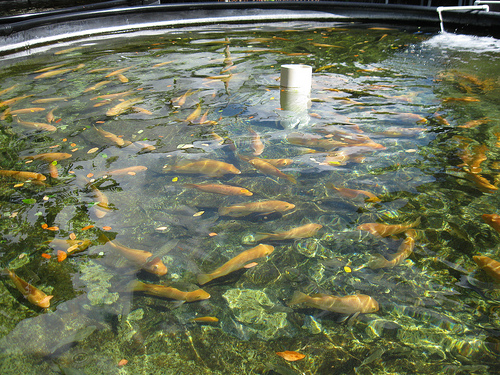Recognizing the important application of probiotics in tilapia aquaculture, researchers led by Dr. Rosalie Rafael of the Freshwater Aquaculture Center of the Central Luzon State University (FAC-CLSU) will assess the potential use of probiotics and prebiotics from selected indigenous plants to lower the protein needs of Nile tilapia.

Through the development of probiotics and prebiotics for tilapia culture, a component of the Philippine Council for Agriculture, Aquatic and Natural Resources Research and Development (PCAARRD)-funded National Tilapia Research and Development Program, Rafael and his group also hope to lower the production cost of tilapia.
Probiotics are “good bacteria” that keep the digestive system healthy by controlling the growth of harmful bacteria.
Prebiotics, on the other hand, are carbohydrates that cannot be digested by the host organism. These serve as food for the probiotics in the intestinal gut. When incorporated in the fish diet or added to the water, it will increase the population of beneficial bacteria in the intestine; inhibit the growth of pathogenic bacteria; and release enzymes that aid in the digestion of feed.
Previous findings show that diets containing different probiotic groups significantly improve the growth of Nile tilapia; improve water quality and activity of the gastrointestinal microbiota; and enhance the immune status, growth performance, and feed utilization of tilapia. It was further reported that the use of commercial probiotics reduce about 2.5 % crude protein when incorporated in the feeds of tilapia.
In the aquaculture industry, commonly used probiotics belong to a wide range of taxa, namely, Lactobacillus, Bifidobacterium, Pediococcus, Carnobacterium spp. to Bacilli, Flavobacterium,Cytophaga, Pseudomonas, Alteromonas, Aeromonas, Enterococcus, Nitrosomonas, Nitrobacter, and Vibrio spp., yeast (Saccharomyces, Debaryomyces), and others.
Some of these probiotics are derived from the gut of healthy fish, larvae, and feces. In tilapia nutrition, however, probiotics used are Bacillus subtilis, Lactobacillus acidophilus, Enterococcus faecium, Lactobacillus rhamnosus, Micrococcus luteus, Pseudomonas spp., Streptococcus faecium, and Saccharomyces cerevisiae.
On the other hand, prebiotics refer to dietary supplement containing nutrients that serve as food for certain bacteria in the digestive tract. Carbohydrates called oligosaccharidesare extracted from their natural sources, synthesized by enzymes or prepared through hydrolysis, and function as prebiotics.
Common oligosaccharides used as prebiotics include inulin, fructo-oligosaccharides, galacto-oligosaccharides, soya-oligosaccharides, xylo-oligosaccharides, pyrodextrins, isomalto-oligosaccharides, and lactulose.
Alternative sources of probiotics and prebiotics are agricultural biomass from residues of plants (i.e., rice straw, corn stalk and leaves, etc.) and processing wastes (i.e., bagasse and microbial processing through fermentation). They contain a range of oligosaccharides and complex polysaccharides broken down into a variety of oligosaccharides. Lactose from inexpensive whey stock, starch-derived oligosaccharides, and fungal mycelia from mushroom spent are other sources of prebiotics. Fermented broken rice (commonly known as “binlid”) is also a source of starch-derived oligosaccharide.
With the availability of local resources like onion leaves, fruit peelings, and other processing wastes, Dr. Rafael and his team hope to develop potential probiotics and prebiotics for the aquaculture industry.
